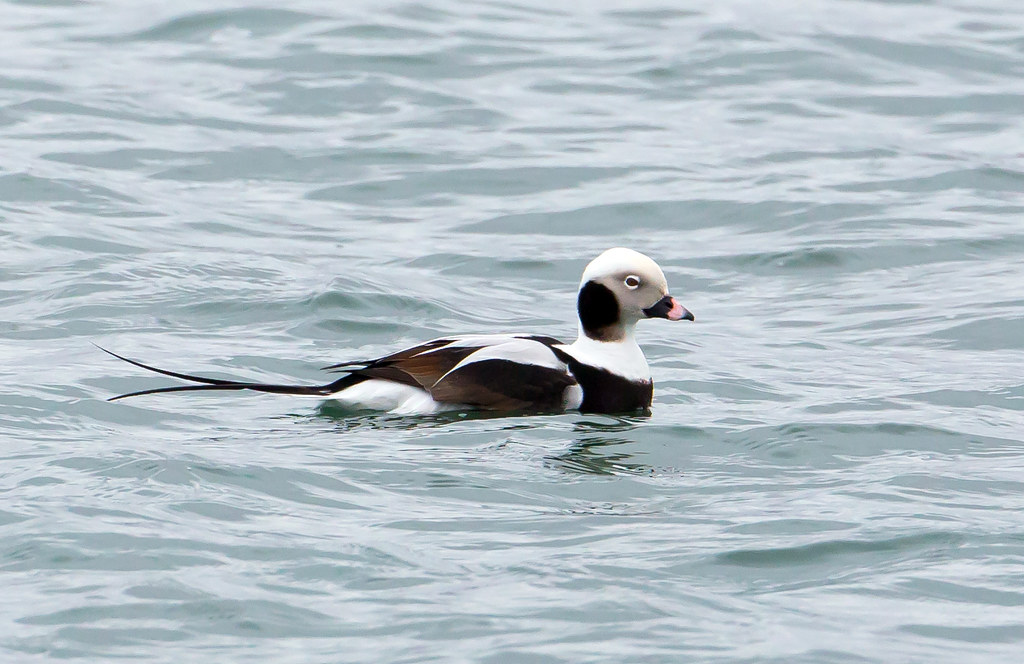Bird of the Month: Long-tailed Duck
By Hugh Jennings
PC: Mick Thompson (Long-tailed Duck)
Scientific Name: Clangula Hyemali
Length 16-21 in
AOU Band code OLDS
The Oldsquaw, aptly named “Long-tailed Duck”, breeds in the Arctic tundra, but is most frequently observed along both North American coasts during the winter. It is a medium sized duck, 16-21” in length. The four letter code is OLDS.
The male’s long tail is conspicuous in flight. It differs from most ducks in having distinct summer and winter plumage in both sexes. Males in breeding plumage are largely dark brown with prominent white cheeks, flanks, and undertail coverts. Breeding females are largely gray-brown with a less sharply defined facial pattern and pale, off-white area on the side of the neck. Males in winter plumage are pale with a white neck, crown, and rump; the buff-gray facial patch extends over the bill and becomes dark brown on the upper neck. The short black bill has a pinkish-orange transverse stripe. Winter females are browner above with pale flanks and distinct facial pattern.
An aid to the identification when plumage details are not apparent is the smaller head and bill in comparison to other ducks. They are expert divers, very active feeders and spend more time under water than above while obtaining crustaceans and other animal life. OLDS are regular winter residents south to the northern sections of Puget Sound. They are identifiable at some distance by their swift, careening flight and loud, yodeling, three-part calls, poorh-poordle-ooh. They are beautiful birds and over 100 were seen on the nature cruise March 1st to Padilla Bay. One was also seen in a pond just south of Dagmar’s Landing on the way to Spencer Island on January 14th.


